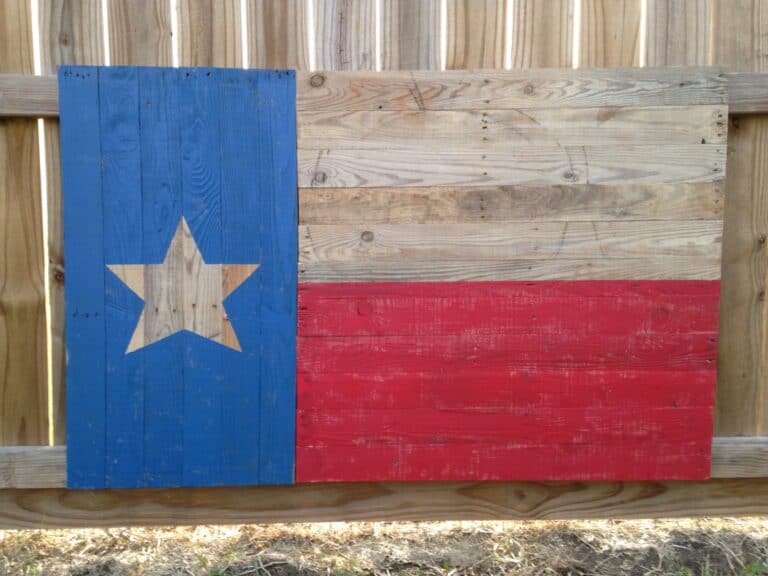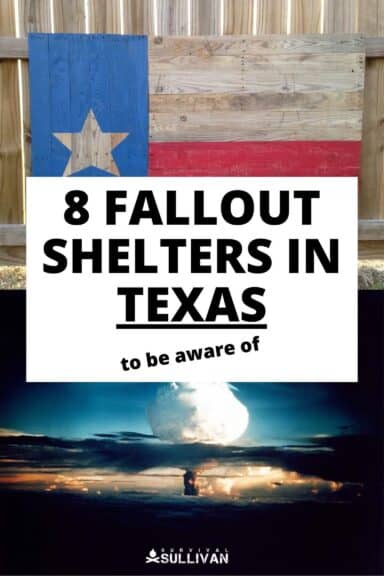When it comes to worry over nuclear incidents, people naturally fear the titanic power of a nuclear warhead detonation. That’s bad enough, but even if you survive the blast, you’ll have to contend with deadly fallout that will soon drift back to Earth and poison everything it touches. Fallout is also a potential hazard in the aftermath of a nuclear power plant meltdown.

Protecting yourself from fallout is a matter of putting as much material and space between you and it as possible, and the best way to do that is with a fallout shelter.
If you live in Texas, I’m bringing you eight excellent fallout shelters to be aware of, including man-made buildings and natural formations.
They may or may not be open to the public or accessible when you need them, but if you live anywhere near them, you’d be wise to incorporate these into your nuclear response plans.
Southland Life Insurance Building, Dallas
The tallest building west of the Mississippi River when it was first opened in 1959, this 42-story megaplex is made almost entirely of steel, aluminum, and glass.
It also has the distinction of being the city of Dallas’s first publicly declared fallout shelter with a capacity of more than 30,000 people. This structure is notable for being designed with the Cold War in mind, which was already well underway at the time.
Today, it is a mixed-use structure known as Santander Tower, housing residential apartments, businesses, and more.
Remember, the key when taking shelter in such a structure is to get to the innermost and lowest rooms possible, and below ground is always best.
If you are above ground or on upper floors, get well away from the windows and seal off doors and vents to prevent the intrusion of fallout carried on the wind.
City Hall, Houston
Houston’s 20-story City Hall has been standing since 1939 and features some of the most gorgeous Art Deco design details you’ll see west of Chicago.
Made almost entirely of heavy limestone, the building has a broad and expansive basement that was quickly designated as a fallout shelter once nuclear tensions started to rise during the Cold War.
Although previously equipped with all kinds of supplies, like food, those have probably long since been removed. Make sure you bring your own shelter kit with you if you have any chance to.
The heavy stone construction and relative lack of windows are definitely advantages for fallout protection, though this building will likely be a hot destination for other fleeing citizens, so keep that in mind.
First Baptist Church, White Settlement
The First Baptist Church in White Settlement is another structure designed with Cold War tensions in mind, and has a purpose-designed fallout shelter located in the basement with sufficient capacity for the church’s congregation and additional nearby residents.
At one time, as part of the national fallout shelter program, this basement shelter would have been equipped with basic supplies, food, potable water, and more, but you won’t be able to count on that these days with the federal support and funding long since having been diminished.
Good churches tend to be prepared for their parishioners, but you shouldn’t bank on getting those supplies for yourself. Bring your own, and preferably bring extra if you want a spot.
Grayson County Courthouse, Sherman
This four-story limestone building is another fine choice for a fallout shelter owing to its relatively small windows and substantial construction.
It has more than enough room to shelter plenty of people and is centrally located in Sherman, meaning it is easy to reach if you work in or around the city, assuming you have a little bit of notice.
Like many buildings of its kind, the basement has been designated as a public shelter for disasters of all kinds, and that ostensibly includes fallout to this very day.
Once again, though, that doesn’t mean there will be supplies waiting for you, and like other large civic structures, it will likely be one of the first places that panicked citizens think of when time is short. Be ready for a stampede…
Caldwell Elementary School, McKinney
Built in the early 1950s, Caldwell Elementary School has a large auditorium building built on a steep grade, a telltale giveaway of classic civil defense planning. The basement of the auditorium building is still marked with its sun-faded fallout protection placard.
Spacious and protected both by the soil surrounding it and also a foot-thick foundation wall, it affords excellent protection from even intense radiation.
Presently, the basement is mostly full of unused wood shop equipment, machines, and more, though it is certainly still ready to protect students, parents, and nearby residents.
Inner Space Cavern, Georgetown
First discovered in the early 1960s, the appropriately named Inner Space Cavern is a large and spacious limestone cave that reaches approximately 70 feet below the surface. Or, at least the human-accessible chambers are that deep.
This is more than adequate to protect anyone inside from even hard radiation, to say nothing of quickly decaying fallout. The cave goes into the ground for over a mile and is relatively easy to access and navigate.
Though a fairly popular tourist destination, it is an all-natural and superb choice for a fallout shelter, though one with the same logistical challenges attendant with any cave. Namely, light, air circulation, and a total lack of supplies.
Natural Bridge Caverns, San Antonio
A natural wonder of Texas, Natural Bridge Caverns is one of the largest known and explored cave systems in the entire state.
With more than 2 miles of surveyed passages reaching more than 180 feet underground, there’s plenty of room, and you’ll have a comfortable stay since the entire system naturally stays at a pleasant 70°F.
The limestone cavern goes so deep and is so strong it will even prove to be good protection against a fairly near nuclear blast, meaning this is one of the best choices on this list, assuming you can reach it in time and there is room inside.
Like most touristy caves, there will be a surge of people trying to reach it…
Wonder Cave, San Marcos
Formed by an ancient earthquake, Wonder Cave is what is known as a dry-formed cave because it is, in essence, a massive fissure, or rent, in the Earth that was not created by the erosive effects of water.
First discovered by Mark Bevers in 1893 and used to conceal his moonshining operation, it has since been made a fixture of Wonder World amusement park.
The entrance to the cave is located 1 mile southwest of the county courthouse.

The post 8 Fallout Shelters in Texas To Be Aware Of appeared first on Survival Sullivan.
https://www.survivalsullivan.com/texas-nuclear-shelters/
 CampingSurvivalistHuntingFishingExploringHikingPrivacy PolicyTerms And Conditions
CampingSurvivalistHuntingFishingExploringHikingPrivacy PolicyTerms And Conditions
